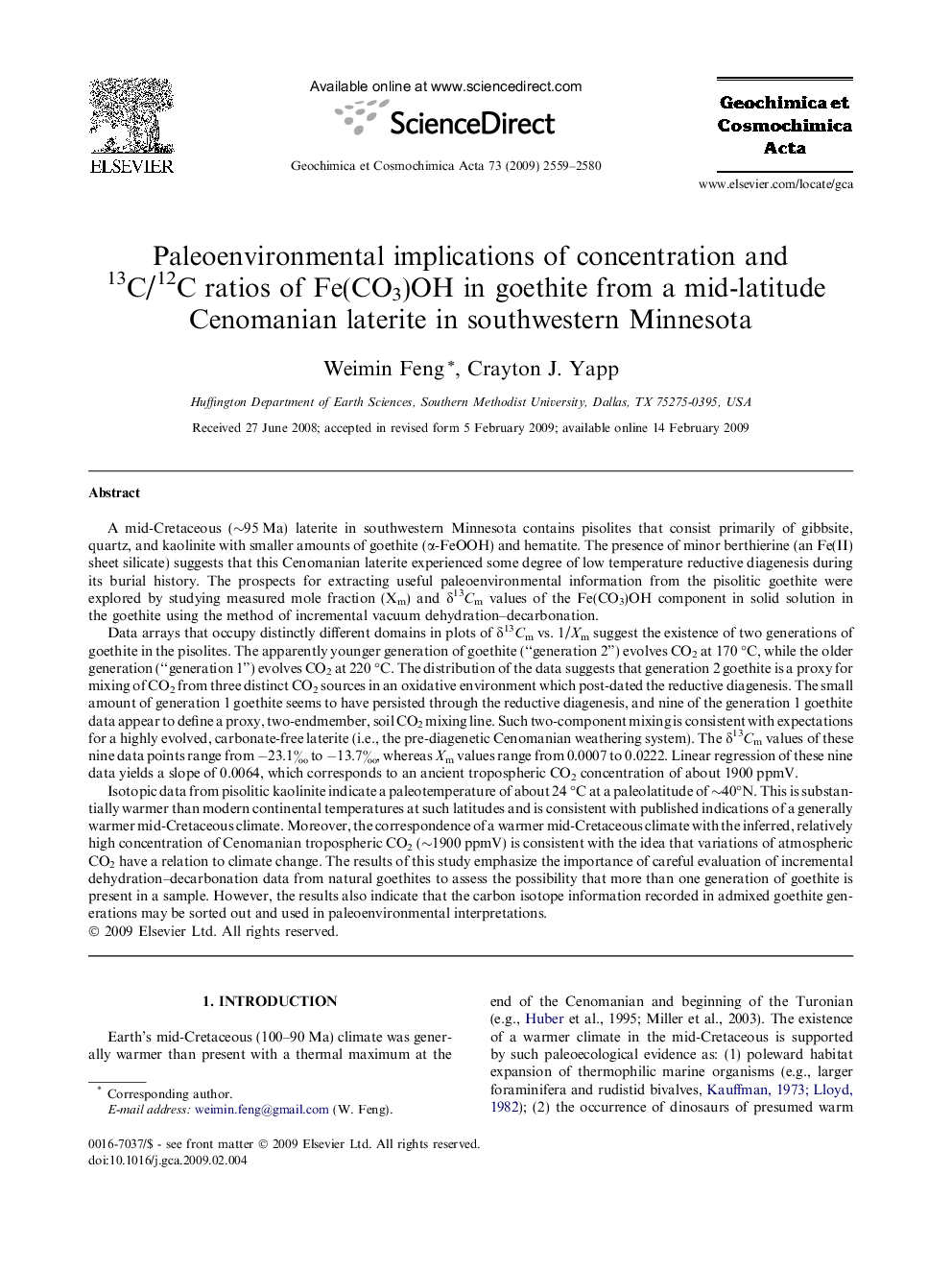| کد مقاله | کد نشریه | سال انتشار | مقاله انگلیسی | نسخه تمام متن |
|---|---|---|---|---|
| 4705070 | 1352941 | 2009 | 22 صفحه PDF | دانلود رایگان |

A mid-Cretaceous (∼95 Ma) laterite in southwestern Minnesota contains pisolites that consist primarily of gibbsite, quartz, and kaolinite with smaller amounts of goethite (α-FeOOH) and hematite. The presence of minor berthierine (an Fe(II) sheet silicate) suggests that this Cenomanian laterite experienced some degree of low temperature reductive diagenesis during its burial history. The prospects for extracting useful paleoenvironmental information from the pisolitic goethite were explored by studying measured mole fraction (Xm) and δ13Cm values of the Fe(CO3)OH component in solid solution in the goethite using the method of incremental vacuum dehydration–decarbonation.Data arrays that occupy distinctly different domains in plots of δ13Cm vs. 1/Xm suggest the existence of two generations of goethite in the pisolites. The apparently younger generation of goethite (“generation 2”) evolves CO2 at 170 °C, while the older generation (“generation 1”) evolves CO2 at 220 °C. The distribution of the data suggests that generation 2 goethite is a proxy for mixing of CO2 from three distinct CO2 sources in an oxidative environment which post-dated the reductive diagenesis. The small amount of generation 1 goethite seems to have persisted through the reductive diagenesis, and nine of the generation 1 goethite data appear to define a proxy, two-endmember, soil CO2 mixing line. Such two-component mixing is consistent with expectations for a highly evolved, carbonate-free laterite (i.e., the pre-diagenetic Cenomanian weathering system). The δ13Cm values of these nine data points range from −23.1‰ to −13.7‰, whereas Xm values range from 0.0007 to 0.0222. Linear regression of these nine data yields a slope of 0.0064, which corresponds to an ancient tropospheric CO2 concentration of about 1900 ppmV.Isotopic data from pisolitic kaolinite indicate a paleotemperature of about 24 °C at a paleolatitude of ∼40°N. This is substantially warmer than modern continental temperatures at such latitudes and is consistent with published indications of a generally warmer mid-Cretaceous climate. Moreover, the correspondence of a warmer mid-Cretaceous climate with the inferred, relatively high concentration of Cenomanian tropospheric CO2 (∼1900 ppmV) is consistent with the idea that variations of atmospheric CO2 have a relation to climate change. The results of this study emphasize the importance of careful evaluation of incremental dehydration–decarbonation data from natural goethites to assess the possibility that more than one generation of goethite is present in a sample. However, the results also indicate that the carbon isotope information recorded in admixed goethite generations may be sorted out and used in paleoenvironmental interpretations.
Journal: Geochimica et Cosmochimica Acta - Volume 73, Issue 9, 1 May 2009, Pages 2559–2580